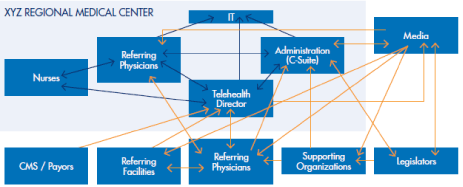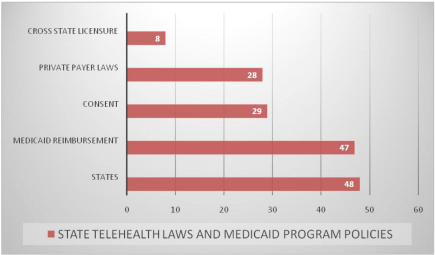
Letter to the Editor
Austin J Dent. 2015; 2(3): 1026.
Moving Forward with Teledentistry
Smith DR¹* and Glascoe AL²
¹Department of Dental Hygiene, University of Howard College of Dentistry, USA
²Department of Periodontics and Preventive Services, University of Howard College of Dentistry, USA
*Corresponding author: Smith DR, Department of Dental Hygiene, University of Howard College of Dentistry, Washington, USA
Received: September 27, 2015; Accepted: October 08, 2015; Published: September 15, 2015
Letter to the Editor
Teledentistry, a component of Telehealth, as defined by the American Dental Association (ADA):” utilizes both information and communication technologies and includes the electronic exchange of diagnostic image files, including radiographs, photographs, video, optical impressions and photomicrographs of patients” [1]. Past research of Teledentistry note effectiveness and efficacy but a lack of systematic reviews to fill in gaps where research has not been initiated or is absent [2].
Telehealth is a broad definition of mechanisms designed to enhance, educate and deliver healthcare services through technology with telecommunications [3] (Figure 1). Teledentistry uses the electronic communication and technology to exchange, consult and collaborate efficiently across various states and geographic locations on simple to complex oral cases. According to the American Dental Education Association (ADEA) there are 43 states along with the District of Columbia utilizing some form of Telehealth services with reimbursement from Medicaid along with current legislative bills for the states of California, Hawaii and Virginia [4].

Figure 1: Telehealth flow chart for teledentistry (Flow chart courtesy of
california telehealth resource center).
The Center for Connected Health Policy (CCHP) regularly provides summary guidelines for the most current legislation and regulations for the 50 states and the District of Columbia (DC) [5]. The summary relates to the most current Medicaid Program Policies by reviewing Medicaid provider manuals, analyzing state laws and referencing state administrative codes. Results of the items reviewed were then itemized into reimbursement, consent, private payer laws and cross state licensure (Figure 2). Reimbursement by Medicaid was provided by 47 of the 48 states that have a definition for Telehealth. 47 states reimbursed for live video which is the most common trend since 2013. Reimbursement for transmission/facility fee (29), Remote Patient Monitoring (RPM) (16) and store-and-forward (9) are noted in the summary but not as popular as live video. 29 states include informed consent in either one or all of their Medicaid policies, state administrative codes or state statutes. 28 states have private payer laws that meet or exceed payment if the patient were treated in an office or clinic setting and 8 states utilize cross state licensure or certifications to provide legal protection to the practitioner who may not be in the state of the patient receiving Telehealth services. The guidelines provided by the CCHP may be a feasible model to apply to Teledentistry.

Figure 2: Data courtesy of the center for connected health policy.
Support for Teledentistry is found on the national level with components of the Affordable Care Act and Healthy People 2020 [6]. Education and Community Based Programs, Access to Health Services, Health Communication and Health Information Technology are topics that manage needs and objectives currently being addressed by Teledentistry that are presently in place in Telehealth. Telehealth laws in many states permit these objectives to be addressed in School Based Health Clinics (SBHC), Federally Qualified Health Centers (FQHC’s) and Rural Health Clinics (RHC). Other avenues for consideration include; long term care facilities, residential visits for the elderly and special needs population, workers’ compensation, along with enhancing current academic curricula and fostering international collaborations.
Moving forward, models using allied health professionals in remote and underserved areas with general supervision and collaboration with physicians, dentists and other specialists strive to provide an innovative workforce. This workforce model may in the future examine policies, legislation and ‘grassroots” support to provide remote, underserved communities and health provider shortage areas comprehensive care. As Teledentistry persists locally and nationally; research, tracking, surveillance and evaluation of treatment visits, referrals, cost, quality of care and patient satisfaction will determine the next level of continued oral care in the 21st century.
References
- Dental Expressions, Teledentistry: Understanding the Issues, Managing the Risks. 2013.
- Daniel S, Lin W, Kumar S. Teledentistry: A Systematic Review of Clinical Outcomes, Utilization and Costs. J Dent Hyg. 2013; 87: 345-352.
- Telehealth Resource Center. 2011-2015.
- American Dental Education Association. 2014.
- Center for Connected Health Policy. 2015.
- Healthy People 2020. 2015.